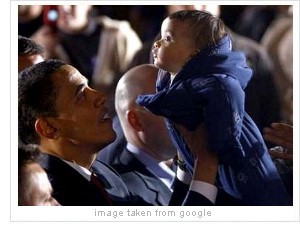Early Childhood Education is named by Obama as Top Priority

With the world experiencing a financial crisis only equaled by that of the Great Depression, the need for the US to provide a solid educational foundation for its youngest citizens has never been more pressing.
As Barack Obama noted at a Democratic debate in Las Vegas in January 2008, "What you see consistently [is that] children at a very early age are starting school already behind. That's why I've said that I'm going to put billions of dollars into early childhood education that makes sure that our African-American youth, Latino youth, poor youth of every race, are getting the kind of help that they need… Every dollar that we spend in early childhood education, we get $10 back in reduced dropout rates, improved reading scores. That's the kind of commitment we have to make early on."
In making early childhood education a key priority of his administration, President Obama has recognized the critical role that the very earliest years play in determining a child's future success in life.Indeed, as he observed at a Democratic primary debate in September 2007, “Closing the achievement gap involves making sure that children are prepared the day they come to school.”
Head Start & Early Head Start
Traditionally, early childhood education has focused on the three- to five-year-old demographic. That is the age range targeted by the federally funded Head Start (HS) program, in operation since 1965, and which saw its funding cut under the Bush administration. HS provides much-needed health, education and support services to low-income parents and their children - and President Obama has pledged to increase the funding it receives.
More recently, child experts and policymakers have been swayed by the weight of mounting neuroscientific evidence into recommending that early childhood education begin much earlier - some would argue, virtually at birth. As so much that is critical in brain development takes place before age three, it is likely that by waiting until that age to begin intervening in children's lives, we will, in many cases, miss a critical window of opportunity for effecting positive change. In recognition of this, the US government in 1995 established the Early Head Start (EHS) program to cater to children in the zero-to-three demographic.
In providing advice and support to pregnant mothers, and parents of children aged zero to three, EHS does a great service to society. Unfortunately, it currently serves just three percent of eligible children. President Obama has pledged to quadruple the size of EHS - and we can only hope that it will grow a great deal more than that during his first term in office.
No Child Left Behind
The president has also promised to reform the No Child Left Behind (NCLB) bill - designed to improve school performance, increase accountability standards, and provide parents with greater flexibility in school selection. The ideas behind NCLB were sound; but, as Obama noted at a Democratic primary debate in August 2007, “We left the money behind for No Child Left Behind, and so there are school districts… all across the country that are having a difficult time implementing [it].” Obama wrote in a Democratic online debate the following month, “NCLB has been false advertising. And there doesn't seem to be a sense of urgency about improving the education system. It is a sense of urgency that we've got to restore if we're going to be able to remain competitive in this new global economy.”
Will the next US administration put its money where its mouth is and commit to providing high-quality early childhood education all across the country? In these grim economic times, it's an investment that the nation can hardly afford to go on not making.
